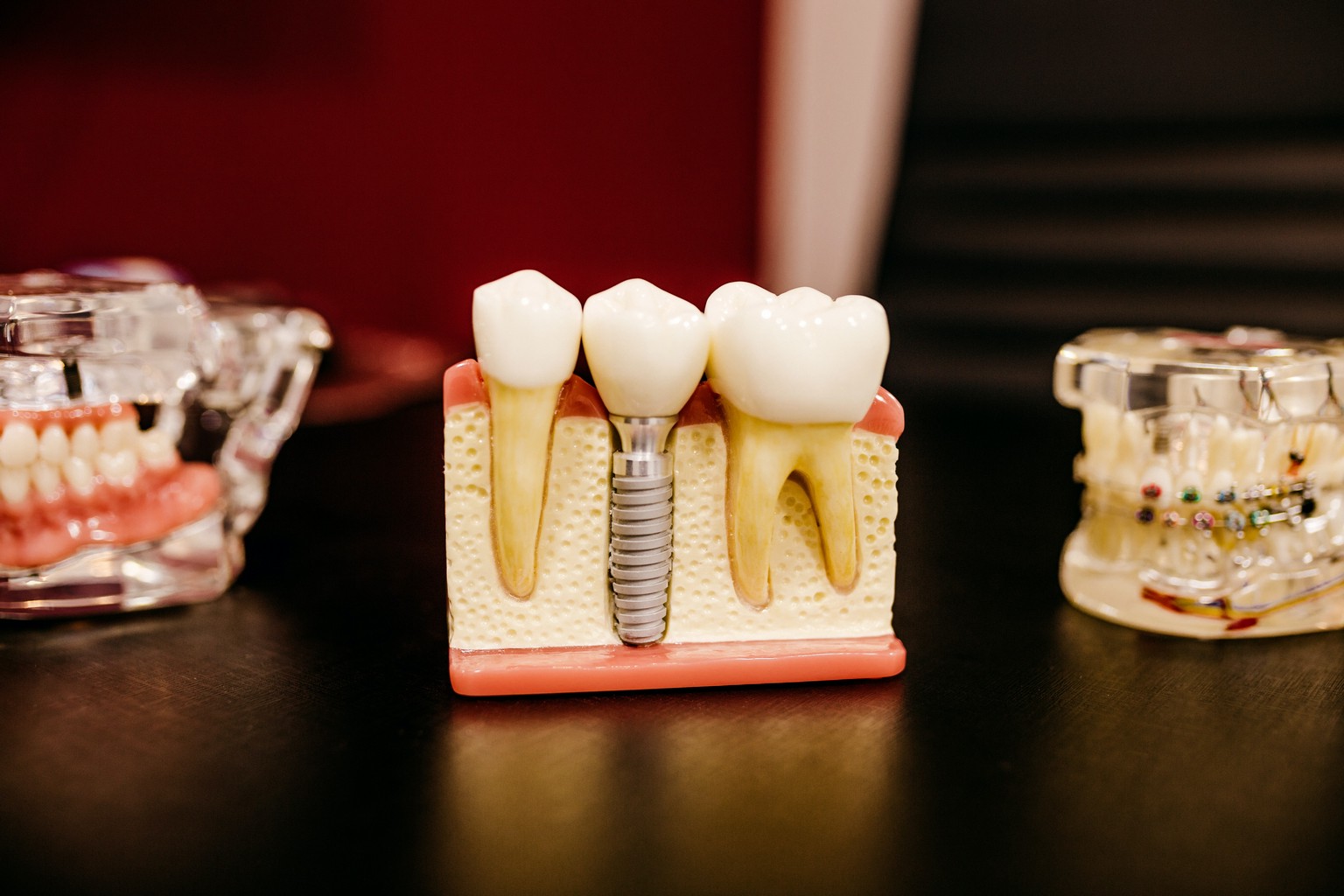Written by Dr. Birute Bond
What is a dental implant?
A dental implant is a metal screw made from pure titanium or titanium alloy and used to replace a missing tooth or teeth. The same materials are used in other types of implants for humans, such as during hip or knee replacement. When an implant is inserted into the bone, the bone cells grow into direct contact with the implant through a process called ‘osseointegration’.

How successful is dental implant treatment?
Dental implants are supported by over 30 years of research, have excellent success rates (over 95%) and are one of the safest treatments in medicine. Some of the most important factors for a successful dental implant treatment are genetics, good oral hygiene, bone quality and quantity, soft tissue thickness, implant design and the knowledge and abilities of the dental surgeon.
How can dental implants be used to replace missing teeth?
A dental implant is used to replace the missing tooth root. This artificial root can be used to attach a single tooth, multiple teeth or to stabilise dentures.
Single missing tooth
This is the most straightforward implant treatment where a single missing tooth is replaced with an implant and an individual crown is attached to it. This treatment is superior to the traditional conventional bridge treatment where teeth next to the missing tooth must be prepared for crowns and healthy tooth structure is lost. However, single missing tooth / teeth replacement for front teeth can be very challenging and require a lengthy treatment period to achieve a high aesthetic outcome.

Few missing teeth
When a few teeth are missing not every tooth must be replaced with an implant. Quite often missing teeth can be restored with an implant bridge.

Multiple missing teeth
When multiple or all the teeth are missing, they can be replaced with:
• Fixed implant bridge(s) (requiring 4-8 implants) – this restoration is fixed to the implants and cannot be removed by the patient.

•Implant retained denture (require 2-4 implants) – this restoration can be removed by the patient to ease the cleaning under the prosthesis.

What does this treatment involve?
• Patients can choose to have implant treatment with intravenous sedation. This treatment utilises sedatives to relax the patient and to make them sleepy during the treatment. It helps some patients to cope with dental treatment and to reduce anxiety.
• Dental implant placement is done under local anaesthetic and the patient does not feel pain.
• Usually, painkillers and antibiotics are given to the patient prior to implant placement procedure to improve postoperative pain and healing.
• Dental implants are placed into the bone with or without bone augmentation (recreation of missing bone).
• Healing review and suture removal in 1-2 weeks. Depending on the size of the procedure and required bone augmentation, implants are left unrestored for 3-9 months.
• If bone quality is good, a temporary crown or bridge can be attached directly to the implant(s) on the same day. This is a very successful procedure, but not appropriate for all situations. If the bone quality is not adequate, a temporary bridge can be attached to the neighbouring teeth, or a removable denture can be made.
• The final part of a procedure is making the implant prosthesis (for instance: single or multiple fixed implant crowns or bridges, implant retained dentures, etc.). Depending on the type of final implant prosthesis, this procedure can range from 2 visits or multiple visits and the patient may require intermediate provisional prosthesis.





